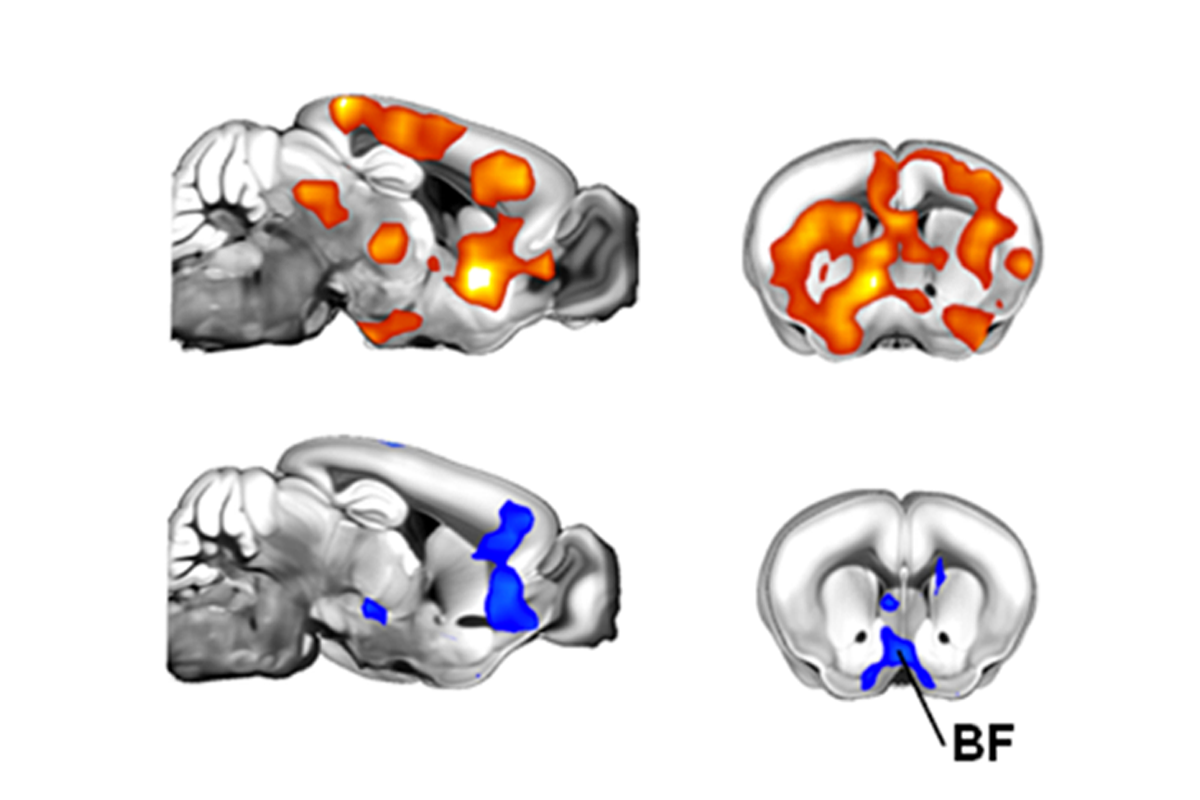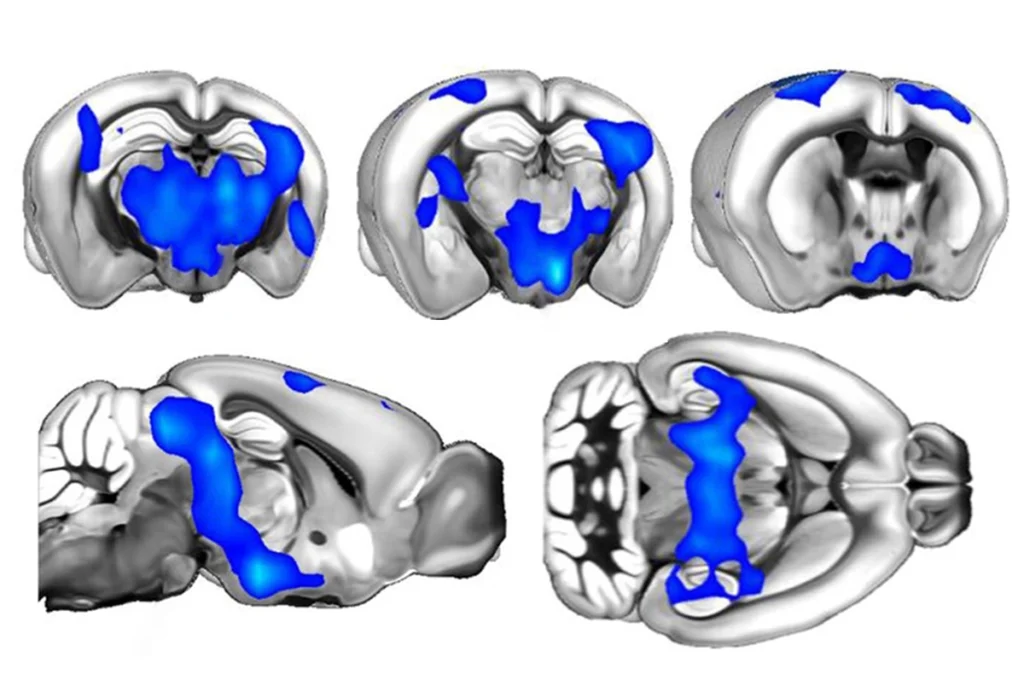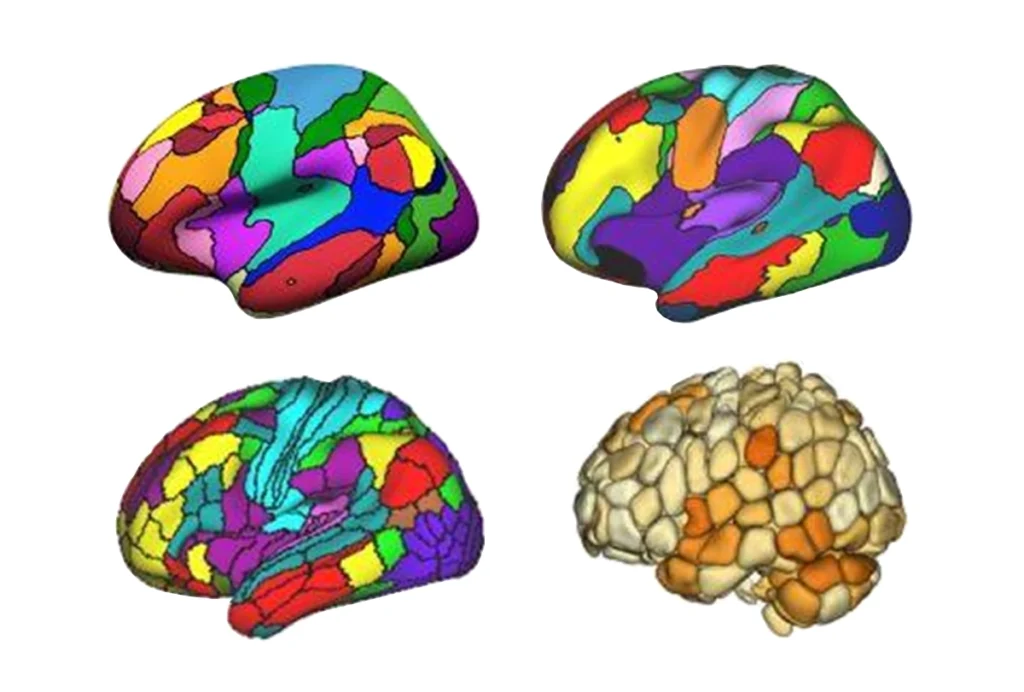The brains of people missing a section of chromosome 22 show distinct connectivity patterns at different stages of development, according to a new preprint. And these altered connectivity patterns appear to be linked to changes at the synapse.
Before adolescence, the brains of people lacking the chromosomal region 22q11.2 are hyperconnected compared with those of people without the condition, the preprint found. But those patterns appear to reverse during development, as select brain regions become less connected after puberty.
And the most extreme changes in connectivity are predictive of social problems, the results show, suggesting that the altered wiring contributes to autism traits. Deletion of 22q11.2 is linked to a host of neuropsychiatric conditions, including autism and schizophrenia.
Flip-flopping from too many connections in childhood to too few in adulthood could be the brain’s way of compensating for insufficient pruning of synapses in early life, the study’s authors say. Synaptic remodeling may therefore be markedly different in people with 22q11.2 deletion syndrome, says co-lead investigator Carrie Bearden, professor of psychiatry and behavioral sciences and psychology at the University of California, Los Angeles. “Something profound is going on developmentally.”
People with the deletion show atypical connectivity patterns at different select times during development, past imaging studies from Bearden and her colleagues show. But that work did not capture the trajectory of brain development. Nor can brain images alone shed light on underlying pathways, the researchers say.
So the team took a longitudinal approach and used functional MRI to map brain connections in mice before and after the onset of puberty, and then corroborated their findings in pre- and post-pubescent people. That approach helped the group back-translate brain scans to underlying pathways, says co-lead investigator Alessandro Gozzi, senior researcher at Istituto Italiano di Tecnologia in Rovereto, Italy.
“Translating blobs on a map into potential mechanisms is a major step forward,” he says.
U
nlike wildtype animals, prepubescent mice missing 22q11.2 developed extra connections from the default mode network—the part of the brain involved in daydreaming and mind-wandering—to nearby regions. But those same brain areas appeared underconnected by the time the mice had completed puberty, the researchers found.Changes in the density of dendritic spines—the small neuronal protrusions that receive messages from other neurons—appeared to mirror those connectivity changes. Young mice with the deletion had more spines than wildtype rodents but fewer during adulthood, suggesting that excessive pruning of dendrites may contribute to the connectivity shift during development.
This over-weeding of synapses may involve GSK3-beta, a key regulator of synaptic development known to be overactive in animals missing 22q11.2. When the researchers administered an inhibitor of this protein, brain connectivity briefly adjusted to wildtype levels.
The team then pooled three fMRI datasets from 139 people with the deletion and 117 people without the condition. Parts of the brain involved in sensory processing and motor skills form more connections in people with the deletion before puberty, yet older people possessed fewer connections in the hippocampus, the study found.
“[The preprint] nicely showcases how cross-species studies can increase confidence in the robustness of the findings,” says Ralda Nehme, director of the Stem Cell Program at the Stanley Center for Psychiatric Research at the Broad Institute of MIT and Harvard, who was not involved in the work.
Within the most affected regions, some genes are more highly expressed in people with the condition than in controls, the researchers found. From the 3,897 transcripts identified, a large chunk code for synaptic proteins or are known to interact with GSK3-beta—suggesting that synaptic changes involving GSK3-beta contribute to altered connectivity in people with 22q11.2 deletion syndrome.
C
onnectivity changes in sensory-motor brain regions strongly correlate with social problems, the team also found. That result suggests that the pattern of hyper-to-hypo connectivity relates to autism traits.22q11.2 deletion is linked to conditions that arise either early in development, such as autism, or relatively late, says Jacob Vorstman, professor of psychiatry at the University of Toronto, who was not involved in the work. “Looking at connectivity from a developmental perspective makes [the work] particularly strong.”
Why people missing the same chunk of a chromosome develop different neuropsychiatric conditions at different times is an unsolved question in the field. But follow-up studies may reveal connectivity changes that can be linked to the different outcomes, Nehme says.
That type of study, which would require a much larger sample, could be challenging, Bearden says. But in the nearer term, analyzing how genetic background—something Bearden’s team has previously linked to distinct outcomes—influences brain connectivity may be informative, she says. “That is something we would love to pursue further.”






